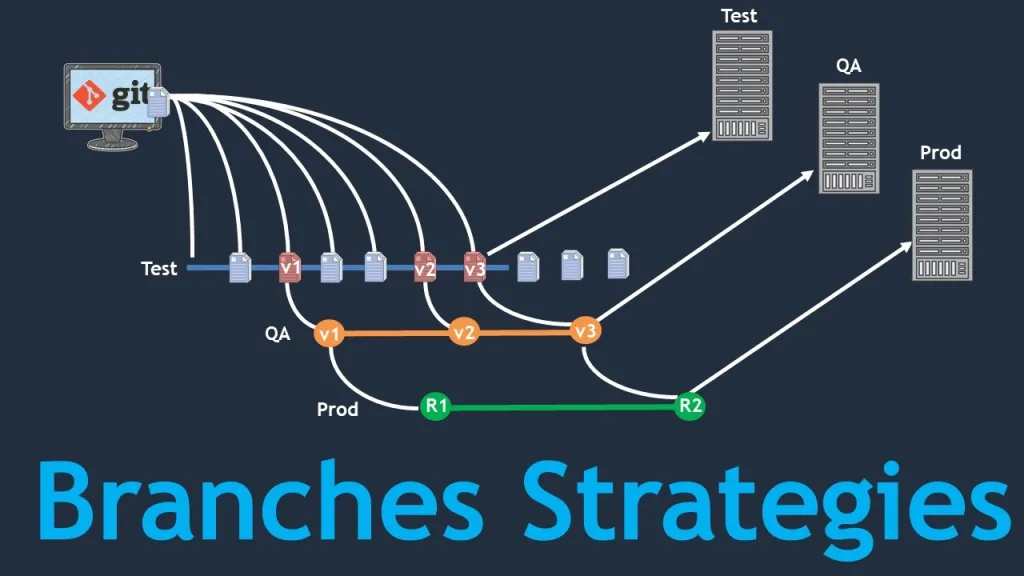Git is a popular distributed version control system that provides developers with powerful tools for managing source code. One of the key features of Git is branching, which allows developers to work on different features or fixes in parallel without affecting the main codebase.
A good Git Branching Strategies can make a huge difference in the efficiency and organization of a development team. In this article, we will discuss the various Git branching strategies and their advantages and disadvantages.
What is a Git Branching Strategy?
A branching strategy is a set of rules and guidelines that dictate how developers should create, manage, and merge branches in a Git repository. A good branching strategy can help teams avoid conflicts, reduce errors, and ensure that all changes are properly tested and integrated into the main codebase.
There are many different branching strategies, each with its own advantages and disadvantages. Let’s take a look at some of the most popular ones.
Git Flow (Git Branching Strategies) :
Git Flow is one of the most popular branching strategies used by development teams. It is based on the idea of having a long-lived “develop” branch where all new features and bug fixes are merged. New features are developed on short-lived feature branches that are created from the “develop” branch and are merged back into it once the feature is complete.
Once all features for a release are complete, a release branch is created from the “develop” branch. This branch is used for testing and bug fixing, and once it’s ready, it is merged into the “master” branch, which is always kept in a stable state.
Git Flow provides a clear separation between the main codebase and new features, making it easy to manage releases and hotfixes. However, it can be complex to implement and may require additional tools to manage.
Trunk-Based Development :
Trunk-Based Development (TBD) is a simple branching strategy where all changes are made directly on the “trunk” branch (usually the “master” branch). Developers commit changes frequently, and any conflicts are resolved quickly to keep the codebase stable.
TBD is easy to implement and can be very efficient for small teams working on small projects. However, it can become more difficult to manage as the codebase grows, and it can be hard to separate new features from the main codebase.
Feature Branching :
Feature Branching is a straightforward branching strategy where each new feature is developed on a separate branch. These branches are created from the “master” branch and are merged back into it once the feature is complete.
Feature Branching provides a clear separation between new features and the main codebase, making it easy to manage changes and releases. However, it can become difficult to manage if there are a large number of branches, and conflicts can be more common.
Conclusion :
There is no one-size-fits-all branching strategy for Git. The best strategy for your team will depend on the size of your project, the number of team members, and your development workflow.
That said, Git Flow is a popular and effective branching strategy that provides a clear separation between the main codebase and new features. Trunk-Based Development is a simple strategy that can be very efficient for small teams and projects, while Feature Branching provides a straightforward way to manage changes and releases.
Ultimately, the most important thing is to choose a strategy that works for your team and stick to it consistently. With a good branching strategy in place, you can ensure that your team is productive, organized, and efficient in managing your Git repositories.
When undertaking the logical steps of planning, designing, programming and testing before deploying a new application or feature, the PWH Services team is acutely aware that no matter how good our work seems in the moment, there are always consequences on the horizon. We do our best to plan ahead as much as possible by attempting to foresee any potential problems in advance.

